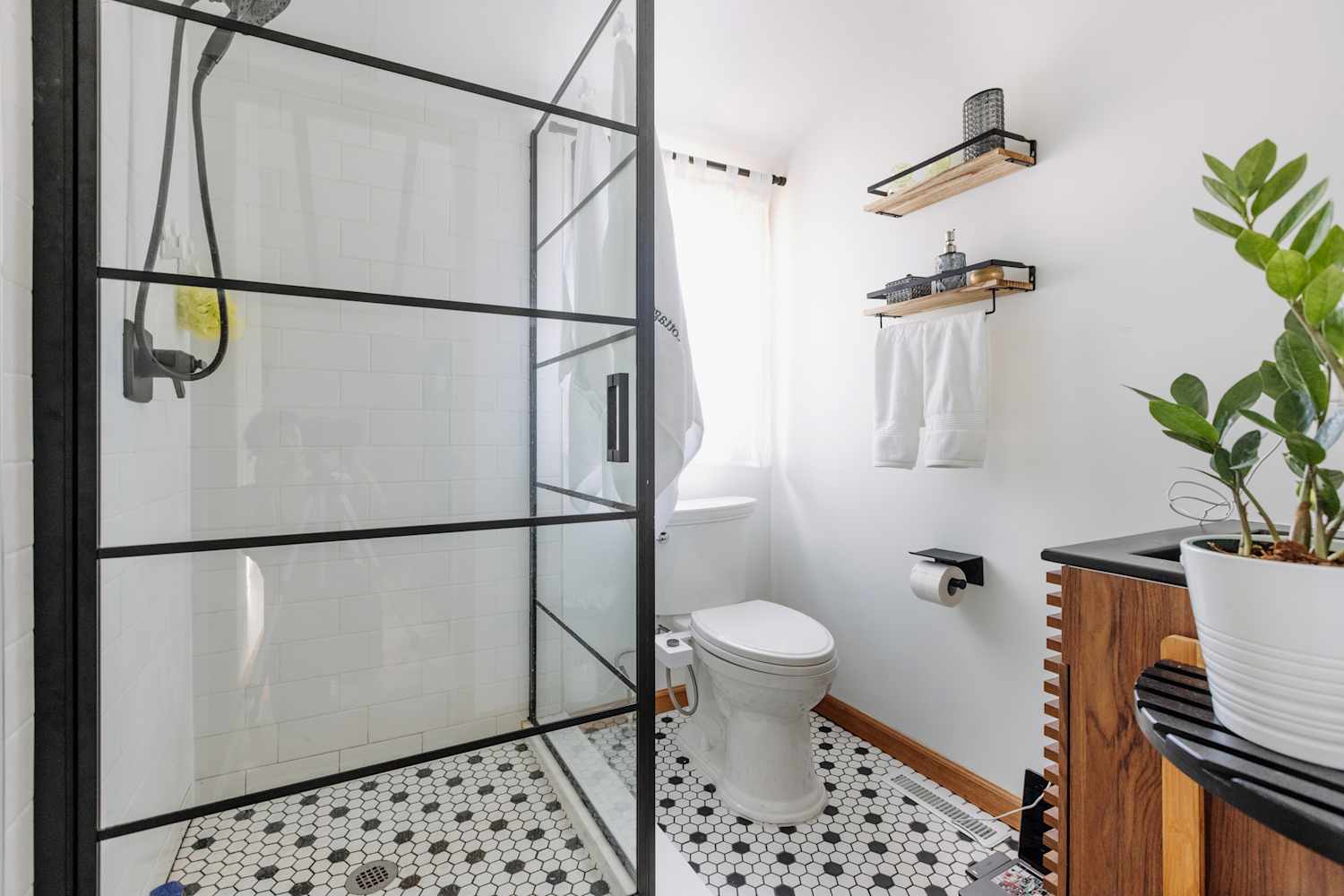
"I grew up in a pre-war bungalow house in Belmont Cragin, which is a bungalow belt neighborhood in Chicago (think: squat little houses with bay windows lining the entire block, harkening back to a time of streetcars and phonographs). The homes there were mainly built between 1910 and 1930 to accommodate an exploding middle-class population, per this local encyclopedia. Bungalow homes were part of the answer to this boom, and when my parents moved into our particular house, very few updates, if any, had been made since the time it was built. The kitchen had steel cabinets, the dining room had glass block windows, and the wooden sleeping porch out back was still intact. The detail I remember most vividly, though, was the hexagonal floor tiles in our bathroom; they were laid in a floral pattern and color-matched to the blue tiles on the walls."
"Bathrooms weren't a common house feature for most of the 19th century. "As running water and plumbing infiltrated the mainstream bathroom, there was an opportunity to create a new space - a space that hadn't been considered for design before," says Erin Byrd Oliver, principal designer at American Restoration Tile, a Little Rock, Arkansas-based custom ceramic tile manufacturer."
Bungalow neighborhoods expanded in the early 20th century to house a growing middle class, with many homes built between 1910 and 1930. Interior details in these houses often remained unchanged for decades, including kitchens with steel cabinets, dining rooms with glass block windows, and wooden sleeping porches. Hexagonal floor tiles frequently appeared in bathrooms, sometimes arranged in floral patterns and matched to wall tile colors. Bathrooms were uncommon through much of the 19th century, and the arrival of running water and plumbing created a new, deliberately designed domestic space. Early bathroom finishes included luxurious wooden wainscoting and lacquered surfaces as design options evolved.
Read at Apartment Therapy
Unable to calculate read time
Collection
[
|
...
]